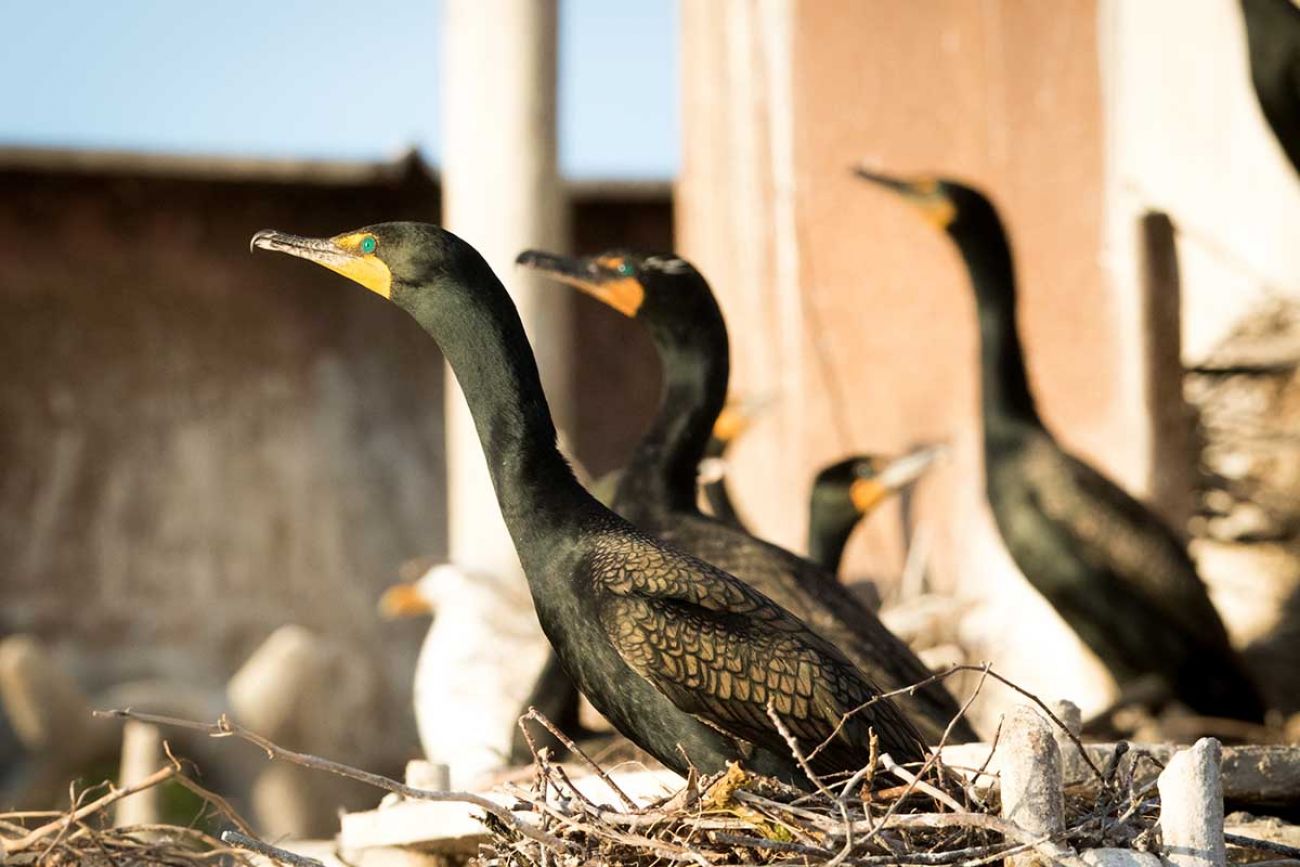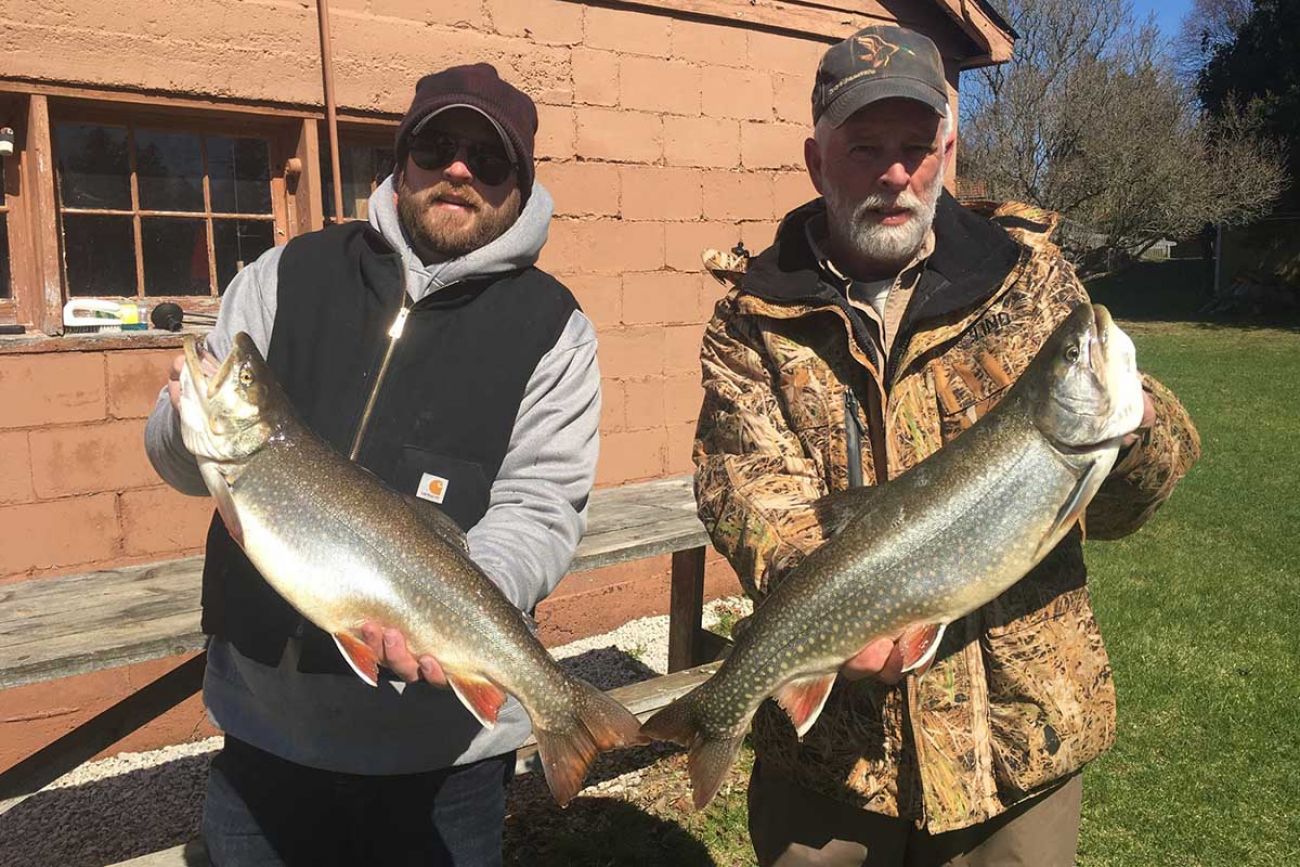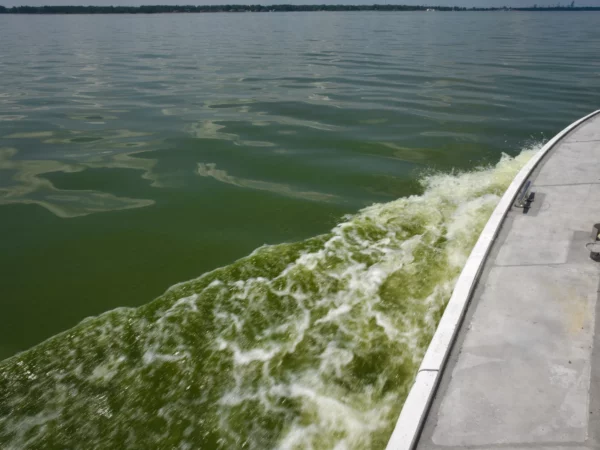
By Kelly House and Makayla Coffee, Bridge Michigan
The Great Lakes News Collaborative includes Bridge Michigan; Circle of Blue; Great Lakes Now at Detroit Public Television; and Michigan Radio, Michigan’s NPR News Leader; who work together to bring audiences news and information about the impact of climate change, pollution, and aging infrastructure on the Great Lakes and drinking water. This independent journalism is supported by the Charles Stewart Mott Foundation. Find all the work HERE.
After years of urging federal regulators to let them protect fish by killing double-crested cormorants — a slender, black seabird that nests in colonies throughout the Great Lakes region — Michigan anglers and wildlife managers have gotten their wish.
Under a new federal permit program that took effect this year, Michigan officials can kill up to 9,650 adult birds and destroy up to 1,400 nests in hopes of keeping fish out of cormorants’ bellies and on Michigan anglers’ fishing hooks.
So far, workers have shot about 2,000 birds and poured oil over 1,000 nests to keep eggs from hatching, DNR Lake Huron Basin Coordinator Randy Claramunt said during a July 15 presentation before the Michigan Natural Resources Commission.
Claramunt said Michigan will likely only kill about a third as many cormorants as its permit allows.
The new lethal control program is welcome news to Tom Frontjes, a resort owner and charter boat captain on the Les Cheneaux Islands in northern Lake Huron, which is home to a cormorant colony that numbered 1,500 nesting pairs in 2018.
The islands’ once-abundant sportfish stocks have dwindled from their heyday, and the local tourism industry has suffered as a result. Frontjes attributes those declines in large part to the cormorants.
Each adult bird can eat about a pound of fish per day. Every year that the local colony went unchecked, Frontjes said, was “another nail in the coffin” for fishing tourism.
But while anglers rejoice over the ability to combat a bird they view as competition, some scientists and bird advocates argue the government is wasting resources on a killing program that won’t revive fish populations.
The birds, they argue, are being scapegoated for broader ecosystem changes that have upended the Great Lakes food web.
“People see them eating fish and think they have to be controlled,” said Jim Ludwig, an Ontario-based scientist who studies cormorants. “That’s the mindset, but I don’t think the data supports control on the Great Lakes at all.”
‘Stop the growth’
Cormorants are protected under the Migratory Bird Treaty Act. But the U.S. Fish and Wildlife Service can and does grant exceptions to the act’s ban on killing migratory birds.
Between 2007 and 2016, humans killed an average of 57,464 cormorants each year across the lower 48 states. But the federal program that authorized most of that killing ended in 2016, after a federal judge ruled the Fish and Wildlife Service hadn’t justified its existence.
In the years since, state fish managers and fishing advocates have pushed to regain the ability, said the DNR’s Claramunt.
They won a victory this year, when the federal government launched a new permit program that allows state and tribal wildlife managers to take as many as 121,500 double-crested cormorants nationwide. That’s as much as one-seventh of the U.S. population.
“We needed a new permit system to move forward with a long-term solution, and I’m happy with this approach and this system so far,” Claramunt said.
States must clear several hurdles to get a permit, including showing that they’ve already tried non-lethal control methods such as chasing birds in boats or using loud pyrotechnics to scare them away. They must apply for a new permit each year.
State fishery managers and their designees have long harassed cormorants at big colonies throughout the state. But, Claramunt said, “when you harass them long enough, they get conditioned and they pretty much know you’re not a threat.”
State fishery managers are focused on 13 sites this year, including large Great Lakes colonies on Beaver Island in Lake Michigan and the Les Cheneaux Islands in Lake Huron, along with inland sites such as Brevort Lake near St. Ignace and Indian Lake near Manistique.

Derrek Stuk and Rick Frontjes pose with their catch. Tom Frontjes, a boat captain and resort owner in the Les Cheneaux Islands, said cormorants congregate in shallow bays while fish are spawning, enabling the birds to “do a ton of damage in a very short amount of time.” (Courtesy photo)
So far, workers have killed cormorants at five of the 13 sites, while resorting to harassing the birds at the rest.
On the Les Cheneaux Islands, workers have visited the local cormorant colony multiple times this year on lethal control missions, Frontjes said.
It will take time to shrink a colony that has rebounded since the former federal control program ended, he said, but “I’m thankful that we’re able to stop the growth.”
Does killing birds save fish?
Not everyone agrees.
In a position statement opposing the order, the Michigan Audubon Society noted that other pressures on the Great Lakes, from invasive mussels to habitat loss and pollution, pose far bigger threats to Great Lakes fish.
By killing cormorants, the group said, government officials are “encouraging the persecution of a visually-obvious target, when the reasons for dwindling sportfish populations are complex and lack a silver bullet.”
Other seabirds also eat fish, noted Ludwig, the Ontario-based scientist. But cormorants, with their black plumage and prehistoric appearance, bear the brunt of anglers’ ire.
He chalks it up to a sharply disputed theory of “cultural bias against any animal that’s black,” combined with the cormorant’s communal nesting habits: Their densely-packed colonies make them a highly-visible target.
Ludwig believes the killing program will needlessly harm a native bird species that may already be in decline. A federal program that once kept close track of cormorant nesting sites ended in 2008, he said. As a result, species managers lack a clear picture of how Great Lakes cormorant populations are faring today.
The fish and wildlife service has vowed to develop a protocol to resume monitoring within a year.
Ludwig said his surveys of selected cormorant colonies in the Great Lakes indicates the birds are struggling to find food and protect their nests from eagles that have started eating cormorant chicks as a replacement for the disappearing fish.
“The entire structure of the ecosystem shifted,” Ludwig said, and the culprit is invasive mussels, not hungry cormorants.
Scientific studies have drawn mixed conclusions about whether the birds can drive down sportfish numbers in the Great Lakes, though there is clearer evidence of their impact in smaller inland lakes.
On the big lakes, fish and wildlife managers say the birds’ nesting behavior makes them a localized threat.
Cormorant colonies can number as large as thousands of nesting pairs. One study found that as cormorant numbers rose on the Les Cheneaux Islands, the local perch fishery collapsed.
With all those birds confined in a small area, Frontjes said, “they can do a ton of damage in a very short amount of time,” picking off perch by the thousands as the fish gather in the islands’ shallow bays to spawn.
Nobody is proposing eliminating the birds entirely, Frontjes said, “but you can’t have them totally decimating other species, either.”
Catch more news on Great Lakes Now:
Side by Side: The biggest challenge for birds is cohabiting with humans
Duckling Docks: Toronto installs floating docks to save drowning birds
Birds and Brews: Pour one out for the piping plover
Featured image: Under a new federal permit program that took effect this year, Michigan officials can kill up to 9,650 cormorants and destroy up to 1,400 nests in hopes of keeping fish out of cormorants’ bellies and on Michigan anglers’ fishing hooks. (Bridge file photo)




